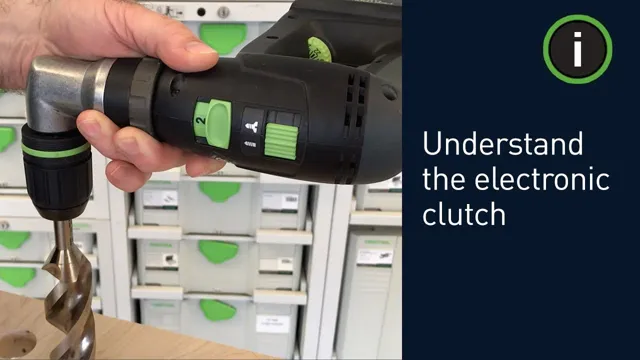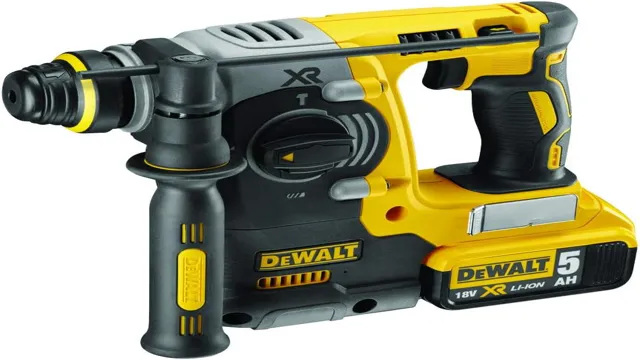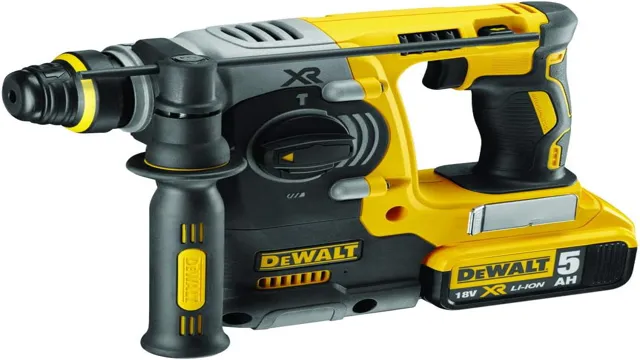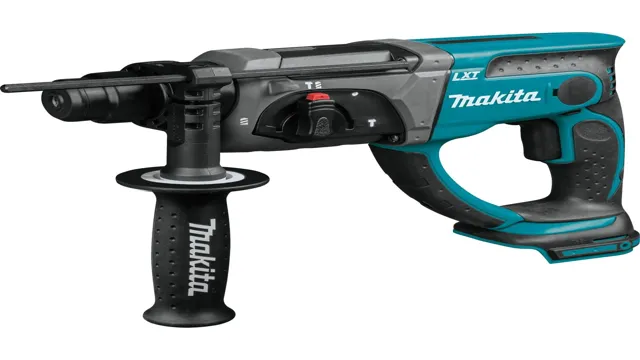
Are you struggling to control the speed of your cordless drill? Do you find yourself accidentally overdriving screws or stripping them altogether? Then it’s time to learn about one of the most essential features of your drill: the clutch. Think of the clutch as the transmission of your drill. Just as a car’s transmission adjusts the torque and speed sent to the wheels, the clutch on your drill can limit the torque sent to the bit.
By adjusting the clutch settings, you can control the power and prevent damage or mishaps. Using the clutch is especially important when driving screws into delicate materials or when working with different sizes of screws. It also helps extend the life of your drill battery by reducing unnecessary strain.
In this blog post, we’ll cover everything you need to know about using the clutch on your cordless drill, including how to adjust the settings, when to use each setting, and tips for getting the most out of your drill. Ready to take control of your drill’s power? Let’s get started.
What is a Clutch on a Cordless Drill?
If you’re new to using a cordless drill, the clutch might seem like a mystery. But don’t worry, it’s actually a really useful feature that can make your drilling experience much smoother. Essentially, the clutch allows you to control the torque on your drill, so that you can avoid overdriving screws or damaging delicate materials.
To use it, simply adjust the clutch setting to the desired level before you start drilling. The numbers on the clutch represent the amount of torque that will be applied to your drill bit, so choose a lower number for softer materials or smaller screws, and a higher number for harder materials or larger screws. With the clutch engaged, you can drill with confidence, knowing that your tool won’t accidentally strip screws or cause other damage.
So next time you’re using your cordless drill, be sure to take advantage of the clutch, and enjoy a more precise and efficient drilling experience!
Definition and Functionality
A clutch on a cordless drill is a component that controls the amount of torque exerted by the drill. Essentially, it allows you to adjust the power of the drill depending on the type of material you are drilling into. The clutch works by disengaging the drill bit from the motor once a certain amount of resistance is detected.
This helps prevent damage to the materials you are working on, as well as the drill bit itself. Think of it like a car’s accelerator: you don’t always need to drive at full speed, and sometimes you need to slow down to make a turn. Similarly, the clutch on a cordless drill allows you to vary the speed and power of your drilling depending on the task at hand.
It’s an essential feature for anyone looking to get the most out of their cordless drill and make sure that they don’t accidentally damage their workpiece.

Different Types of Clutches
A clutch on a cordless drill is the mechanism that allows you to adjust the torque, or the amount of twisting force, needed for different jobs. It’s an essential feature to have since you need different levels of power depending on the task at hand, whether you’re dealing with softwood, hardwood, or metal. The clutch comprises two essential components: a collar and a set of shoes, which engage to transmit power from the motor to the drill bit.
When you start drilling, the shoes are compressed against the collar to engage the clutch. As you apply downwards pressure on the drill, the collar reaches a predetermined torque point and disengages, allowing you to apply maximum power without over driving the drill. This clever feature is perfect for different jobs, from basic household repairs to more specialized tasks where precision and control are essential.
So, the next time you’re using a cordless drill, don’t forget to use the clutch and make your job easier.
How to Use the Clutch on Your Cordless Drill
If you’re the DIY type, you know that a cordless drill is one of the most important tools to have in your arsenal. But did you know that your cordless drill has a clutch? The clutch on your cordless drill is a very useful feature that can help you drive screws without overdriving or stripping them. To use the clutch, simply adjust it to the desired setting before you start drilling or driving.
The clutch is usually located near the chuck, and can be adjusted by rotating it. Different settings correspond to different levels of torque, with higher settings providing more torque. By adjusting the clutch to the right setting, you can ensure that your screws go in smoothly and without incident.
So next time you’re working with your cordless drill, make sure to utilize this helpful feature by learning how to use the clutch on your cordless drill properly.
You May Also Love:
Selecting the Correct Setting on the Clutch
When using a cordless drill, it’s important to understand how to properly use the clutch settings. The clutch on a cordless drill allows you to control the amount of torque that is applied to the screw or drill bit. This is particularly useful for smaller jobs where you don’t want to over-tighten or strip screws.
In order to choose the correct setting on the clutch, you need to determine the size of the screw or drill bit you’re using and the type of material you’ll be working with. A general rule of thumb is to start with a lower setting and gradually increase until you achieve the desired torque. It’s important to remember that using the incorrect setting on the clutch can result in damage to your drill or the material you’re working with, so taking the time to select the right setting is critical.
Keep in mind that using the correct setting will also prolong the life of your drill and help you complete your projects with ease.
Adjusting the Clutch Setting
The clutch on a cordless drill is a feature that controls the torque output, or twisting force, of the drill. By adjusting the clutch setting, you can control how much force the drill applies to a screw or other material. This is important because it can prevent the screw from being driven too far into the material, or from stripping the screw head.
To adjust the clutch setting, locate the numbered collar near the chuck on the drill. Turn the collar to the desired setting, with a lower number indicating less torque and a higher number indicating more torque. It may take some trial and error to find the right setting for your specific task, but with practice, you’ll be able to dial in the perfect amount of torque for any job.
Testing the Clutch Setting
Using the clutch setting on a cordless drill is an essential skill that every DIY enthusiast must learn to execute different screw-driving tasks. It is the key to maintain accurate control of the drill while avoiding stripped screws or over-tightening. To begin, you must familiarize yourself with the clutch settings function and what it offers.
Typically, the clutch releases the chuck’s grip on the bit after a specific torque value, either automatically or manually, depending on the model. Therefore, turning the clutch dial controls the torque level. To find out the correct clutch setting, you need to test it first.
The ideal way to do this is to drive a screw into a scrap wood piece. If you notice the clutch setting slips before the screw head penetrates the wood’s surface, adjust the clutch setting to a higher number. Conversely, if the screw goes too deep or over-tightens, reduce the clutch setting.
With time and practice, you will become proficient in finding the best clutch setting for each task, which will save you time, effort, and money on damaged screws, bits, or project materials.
Benefits of Using the Clutch on Your Cordless Drill
If you own a cordless drill, chances are you’re familiar with the clutch feature. But do you know how to use it properly, and more importantly, why you’d want to use it? The clutch is a handy setting on your drill, which allows you to control the amount of torque the drill applies to the screw you’re driving. This is particularly useful when working with delicate materials, like drywall or cabinets, where too much torque could easily cause damage.
By setting the clutch to a lower number, the drill will stop rotating once it reaches a certain level of resistance, protecting both the material you’re working on and the drill itself. With more experience, you’ll get a better sense of which clutch setting to use for different materials and types of screws. So, next time you’re breaking out the cordless drill, don’t forget about the clutch setting and all the benefits it can provide.
Avoiding Over-Driving
As a DIY enthusiast, it’s crucial to understand the importance of avoiding over-driving when using your cordless drill. Over-driving not only damages your material but also puts undue stress on your drill, causing it to wear out faster. To prevent this, always use the clutch on your drill.
The clutch works by disengaging the drill’s motor when a certain amount of resistance is sensed, preventing you from over-driving the screws or damaging the material. Think of it as a safety belt for your drill. Using the clutch not only ensures a more precise and controlled driving experience, but it also extends the life of your cordless drill.
So whether you’re a seasoned DIYer or just starting, don’t skip out on the benefits of using the clutch on your cordless drill.
Preserving Battery Life
When it comes to using your cordless drill, there’s a trick to preserving your battery life – and it’s all about using the clutch. The clutch is the dial on your drill that allows you to adjust the torque, or twisting force, of the drill. By using the clutch, you can ensure that you’re not putting unnecessary strain on your battery.
When you’re drilling into something soft, like drywall, you don’t need a lot of torque to get the job done. But when you’re drilling into something harder, like wood or metal, you’ll need to adjust the clutch to give you more power. By doing this, you can avoid draining your battery too quickly, which can save you time and money in the long run.
So next time you’re using your cordless drill, remember to use the clutch – your battery will thank you!
Conclusion
In conclusion, mastering the art of using the clutch on a cordless drill is crucial for achieving precision and avoiding damage to your project. It’s like the difference between using a fork and a scalpel – both can get the job done, but one requires finesse and skill. By adjusting the clutch settings, you can customize your drill’s power to match the task at hand, ensuring smooth, clean drilling every time.
So go forth and drill smarter, not harder!”
FAQs
What is a clutch on a cordless drill and why is it important?
The clutch on a cordless drill is a setting that controls the torque or power output of the drill. It’s important because it allows you to adjust how much power you’re using, which can help you avoid damaging your materials or overdriving screws.
How do I set the clutch on my cordless drill?
To set the clutch on your cordless drill, locate the numbered collar near the chuck and twist it to select the desired torque setting. Start with a lower setting and increase it gradually until you find the right level for the job.
What happens if I don’t use the clutch on my cordless drill?
If you don’t use the clutch on your cordless drill, you risk overdriving screws or damaging your materials. This can cause the screws to strip, the materials to split or crack, or even injure yourself if the drill suddenly jerks or slips.
Can I use the clutch on my cordless drill with different drill bits?
Yes, the clutch on your cordless drill can be adjusted to work with a variety of drill bits. However, you may need to readjust the torque setting depending on the size and material of the bit.
How do I know when to adjust the clutch on my cordless drill?
You should adjust the clutch on your cordless drill whenever you’re working with a new material or screw, or if you find that you’re having difficulty driving screws without them stripping or damaging the material.
Can I use the clutch on my cordless drill for drilling holes?
Yes, you can use the clutch on your cordless drill for drilling holes. However, you may need to adjust the torque setting based on the size and density of the material you’re drilling into.
Is it necessary to use a clutch on a cordless drill?
While it’s not absolutely necessary to use the clutch on a cordless drill, it can help make your drilling and driving tasks more efficient and accurate. It can also prevent damage to your materials and screws, which can ultimately save time and money in the long run.






